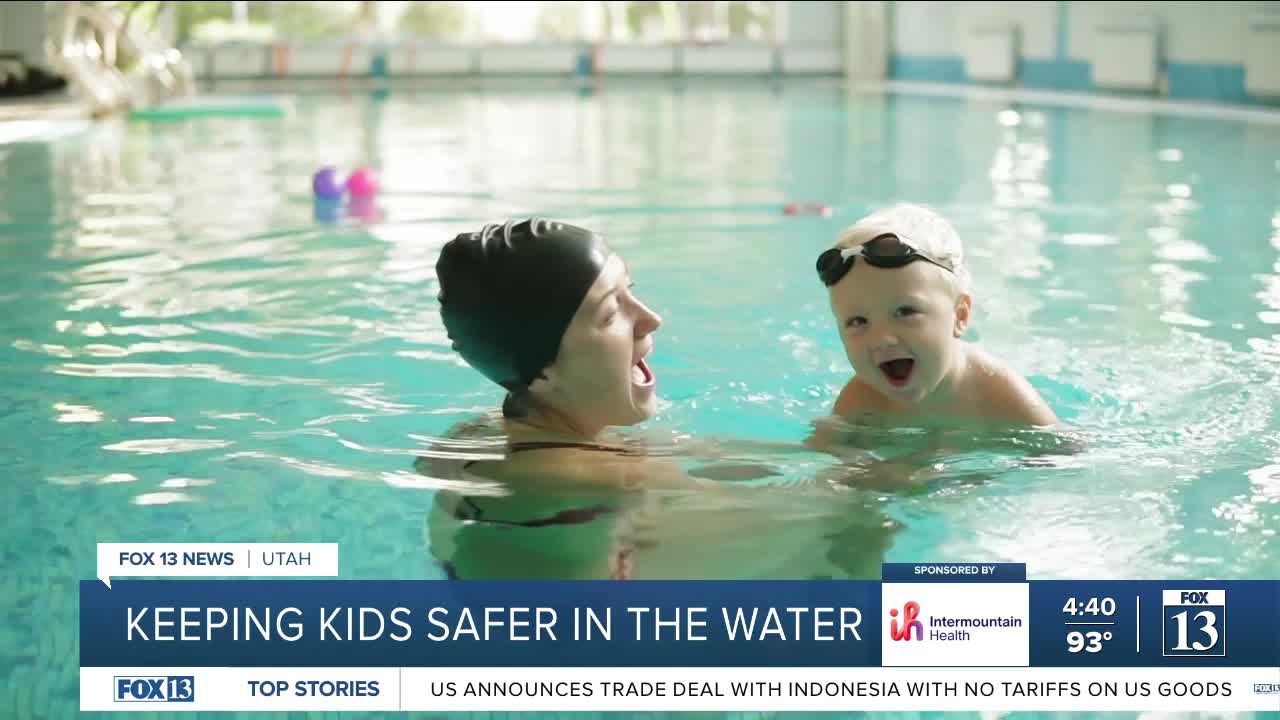Which child is in the most danger? The answer might surprise you.
Three short video clips each show a child near or in water:
- A baby boy sitting at the edge of a swimming pool.
- A boy climbing the pool ladder wearing water wings.
- A boy underwater, sinking and wiggling.
In terms of real-world danger, the order is clear—and maybe unexpected. The first child, sitting dry in street clothes beside the pool, is in the most danger.
Why?
The second child is wearing water wings, which likely means a responsible adult is close by and exercising some caution. In fact, you can even see adults in the background—though it’s unclear if any are closely supervising.
The third child may appear to be in the riskiest position—he’s underwater without any flotation devices—but a grown-up is right next to him. And judging by the delight on the boy’s face, it’s probably not his first time doing this. He looks confident and familiar with the water.
Water safety, especially in the summer, is a critical issue.
“May through August is the time where we see the most, the most drownings, and it is the second leading preventable cause of death in children under the age of 14,” said Karlee Kump, community health manager at Intermountain Primary Children’s Hospital.
Car crashes are the leading cause. But every year in the U.S., about 1,000 children drown, and thousands more are treated for near-drownings.
“You don't want to take your eyes off your kids around water at any point, whether it's a bathtub, a kiddie pool. Even a bucket full of water,” said Kump.
A parent or guardian might be physically present but not alert, which is why constant and intentional supervision is essential.
“This Water Watcher card is a way to identify who is watching the kids while they play in the water,” Kump said.
The card she's referring to—worn around the neck—says “Water Watcher” on one side and the much cooler “Vigilante de Agua” on the other.
At any gathering where kids are near water, one adult should always be assigned to watch, without distractions.
“You are watching the water. You are watching the kids in the water because if everybody's watching the kids, nobody's watching the kids,” Kump said.
Drowning often doesn’t look like much to a bystander. Kids screaming, splashing, and diving under the surface are all normal pool sounds. But once a child slips under without intention, they’re hard to see and impossible to hear.
To help keep water supervision uneventful—and boring, ideally—it’s best to prepare children both long-term and short-term:
Long-term: enroll them in swim lessons.
Short-term: put them in a life jacket.
“Everyone should have a life jacket no matter your ability to swim. Our lakes, our reservoirs, our rivers are cold, and that can affect our bodies very quickly and no matter your skill level, it's best to just take those precautions to prevent drowning,” Kump said.
For more tips to help keep your kids safe, visit Intermountainhealth.org/childsafety.




